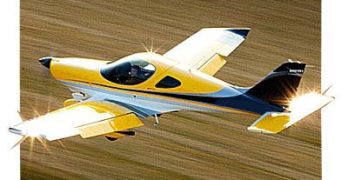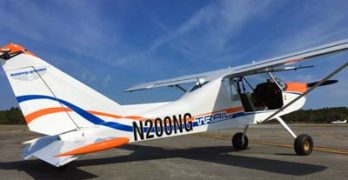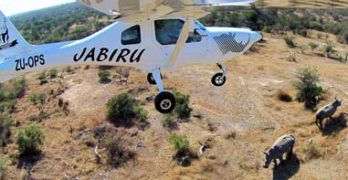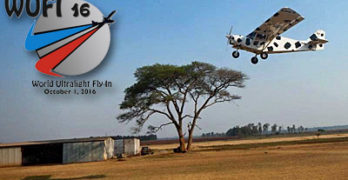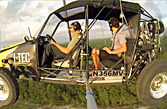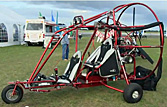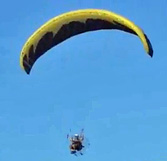April 2017 logged 12 years of Light-Sport Aircraft. The FAA regulation creating the category was introduced in 2004 but it was at Sun ‘n Fun 2005 that the agency presented Evektor SportStar and the Flight Design CT the first and second Special Airworthiness certificates.
My friend and LAMA associate, Jan Fridrich, gave a presentation at Aero 2017 showing many graphs that examine this new airplane sector and how it has developed over the last decade. This article looks at a portion of his analysis.
In those dozen years, the market has developed interestingly.
In the first vigorous years of growth — filling pent-up demand for a two-seat aircraft pilots could fly without a medical — European light aircraft producers dominated the market (chart). Jan’s home country, the Czech Republic, was one of the most prolific, in the early days leading all other countries. Czech designs remain a key player but the field has shifted.
Search Results for : powered parachute
Not finding exactly what you expected? Try our advanced search option.
Select a manufacturer to go straight to all our content about that manufacturer.
Select an aircraft model to go straight to all our content about that model.
What Are Pilots’ “Most Important Issues?”
Update 12/6/16 — According to AOPA Online, “The Federal Aviation Administration has reviewed the AOPA Air Safety Institute’s aeromedical online course and confirmed that it meets the third class medical reform requirements that Congress created last summer. Pilots would need to complete the course, which AOPA will offer for free, every two years in addition to seeing their personal physician every four years to operate under the law.
These steps are NOT required for anyone flying a LSA or Sport Pilot-eligible kit aircraft.—DJ
What issues are “most important” to general aviation pilots for 2017? Are “general aviation” pilots different than those of you who read ByDanJohnson.com? The second question can only be answered by each of you, independently.
My guess is that while you might consider yourself a GA pilot, you might also — or distinctively — consider yourself a “recreational” or “sport” pilot. Whatever label you prefer, I found the following chart of interest.
DeLand Showcase 2016 a Success in Inaugural Event
The first-ever DeLand Sport Aviation Showcase finished on a high note with a sold-out flock of vendors giving kudos to event director Jana Filip and her team. I spoke to most exhibitors and heard zero complaints. By itself that’s rather unusual. Perhaps they were cutting the new show some slack but more likely their enthusiasm was because the show had indeed been well executed.
At every airshow I’ve attended vendors seem hard to satisfy about foot traffic. By afternoon each of the three days, visitors seemed to thin, nonetheless most airplane vendors reported good qualified visitors. Several companies reported “solid leads” developed at the event and apparently a few sales occurred
Attendees also seemed to enjoy themselves in the abundant sunshine and 80-degree temperatures of early November. The event ran 3-4-5 this year and has already set dates for next year with an expectation of similar weather.
List for All Special Light Sport Aircraft
Special Light-Sport Aircraft, or SLSA, are 100% factory built light aircraft that may be used commercially for instruction and rental. These aircraft are accepted by FAA after the manufacturer demonstrates compliance with industry consensus standards and proves they have proper manufacturing controls.
Since the first SLSA approvals in April 2005, the LSA industry has gained FAA approval for more than 150 aircraft models. ByDanJohnson.com is pleased to list all of these models in the order in which they were approved for a LSA airworthiness certificate.
How the SLSA List works… and how you can help
If you know of an approved aircraft not on this list, send us an email and tell us about it.
Keep up with all these new approvals returning to this page frequently. The newest FAA-accepted SLSA appear at the top (default view). Click the No. header to see which aircraft received certification first.
An Excellent Bargain in a Composite LSA
The lines are separating a bit. Once we had a flock of LSA priced closer to one another than today. While some are put off by splashy marketing from companies offering LSA priced north of $200,000, your choices do include fixed wing aircraft for $50-80,000 and alternative (weight shift, gyro, and powered parachutes) LSA for even less.
However, if you want an all-composite design with a digital panel, your choices of lower-cost models is, admittedly, more restricted. It costs money to make things with more exotic materials and with fancier equipment. The great news in late 2016 is customers are getting more choices in “reasonably” priced airplanes (shown in quotes as reasonable is a term that varies from person to person).
The new model in this article will be at the DeLand Sport Aviation Showcase coming up in just over two weeks. I hope you’re planning to attend.
World Ultralight Fly-In 2016; Hundreds Will Fly
A Thousand Ultralight Pilots Sharing the Sky” …is the tagline used by the Dayton Ultralights group again sponsoring the World Ultralight Fly-In. However, what it is NOT is a fly-IN. The truth is that “sub-87” aircraft, as the segment is often called, cannot span the immense distances of an entire globe to fly “in” to one location. So organizers got creative. Sub-87 refers to a LSA regulation reference to aircraft that fly less than 87 knots or 100 mph.
WUFI’16 is, however, the second annual event, an innovative way to get hundreds, perhaps even more than a thousand pilots to all go airborne on the same day and to log that effort on a map that shows the world where on Earth ultralights enjoy the skies. The organizers put only a few restrictions on what kind of aircraft can be used. The event is more one of virtual camaraderie than a physical gathering, a worthy endeavor that represents the spirit of light recreational flying
Look!
Happy 12th Birthday, Light-Sport Aircraft!
Earlier this month, Light-Sport Aircraft celebrated a birthday. The date was September 1st, when FAA made the then-new Sport Pilot/Light-Sport Aircraft rule “effective” (to employ FAA-speak). So… happy birthday, LSA.
In those dozen years — the newest aircraft segment is not even a teenager yet — quite a bit has changed. If you are a parent, you may not notice your child getting older as you see them daily. However, the distant uncle or grandparent who only gets to visit infrequently may be astounded how much the little guy or gal has grown. I suspect those close to LSA may have a similar perspective deficit, so let me make some contrasts.
The nearby images are from a talk I gave at the recently concluded Mid-West LSA Expo. I went into more detail than this article permits but I’ll bet you get the points.
AIRFRAMES — Today, we accept that we have some marvelous, sleek, high-tech, well-equipped, well-performing models.
ITEC-Maverick (2014)
Not many people have gotten to fly the ITEC Maverick, the flying car candidate that has arrived on the market. We interviewed Roy Beisswenger, publisher of Powered Sport Flying magazine, an expert powered parachute pilot, about his experience at going aloft in Maverick. His perspective is special and he tells us how the vehicle drives and more about how it flies and how these experiences are different from a conventional powered parachute.
Powrachute — AirWolf 912 SLSA
How about a deluxe, ready-to-fly Special Light-Sport Aircraft that can carry more than 700 pounds of payload, climb at 700-1,200 feet per minute, yet sell for less than $40,000? (Seriously, the one in this video remarkably lists for $38,000!) Though some pilots may wonder if a powered parachute is for them, my experience says they are superb viewing platforms and when they are built this beautifully, you simply have to reconsider.
Planet PPG — Paragliders & Pargliding
Some of the most intriguing aircraft that fly at major airshows like Sun ‘n Fun are paragliders. These are not powered parachutes with wheeled carriages, but rather the sort of flying machine you “wear” on your back and run into the air. These are the lightest of all powered aircraft and you can literally put your entire aircraft in the trunk of an average sized car. We speak with expert Paul Czarnecki of Planet PG in southwest Florida who gives us kind of video lesson in flying these rigs.
- « Previous Page
- 1
- …
- 7
- 8
- 9
- 10
- 11
- …
- 45
- Next Page »



